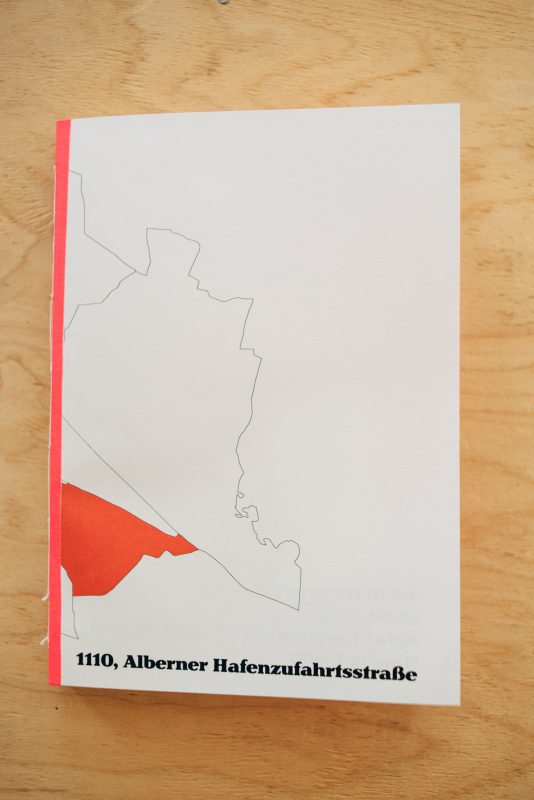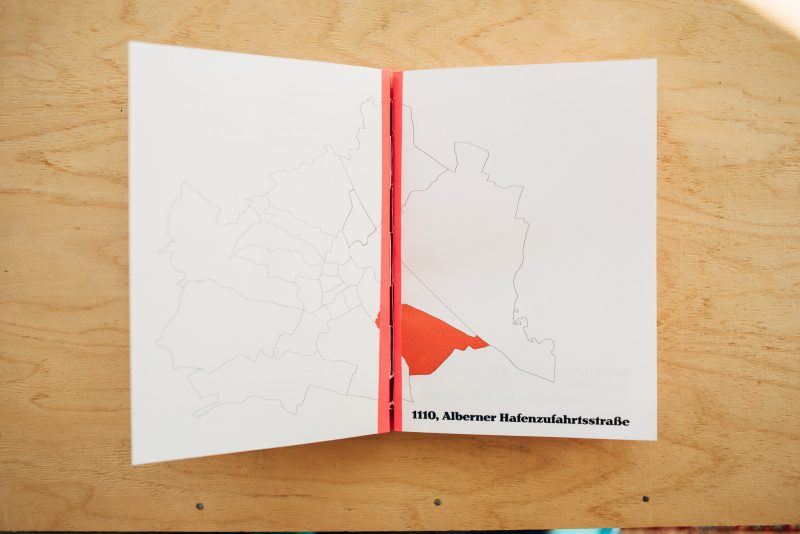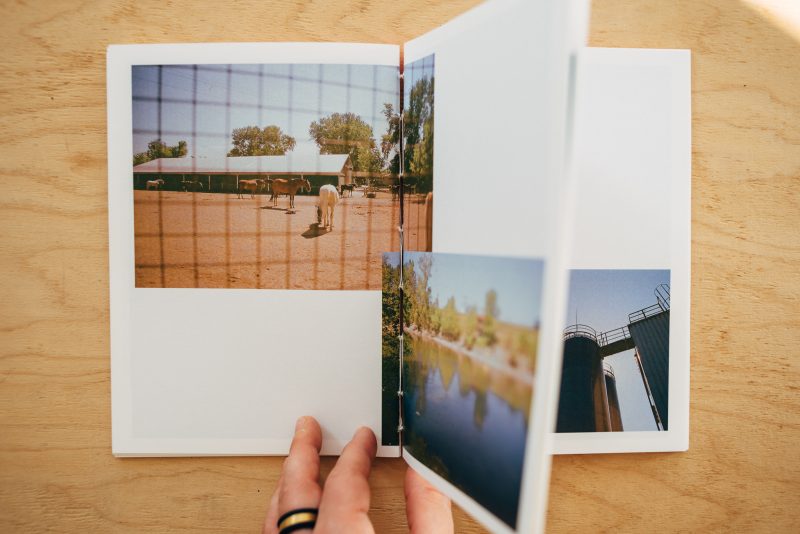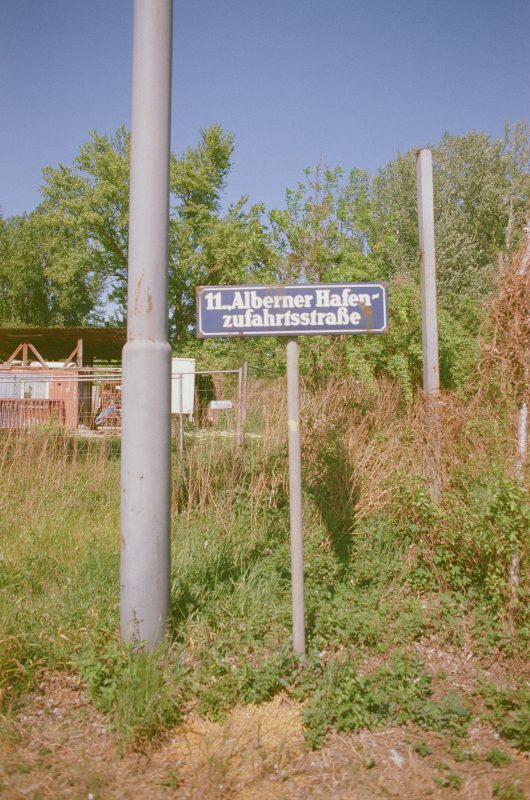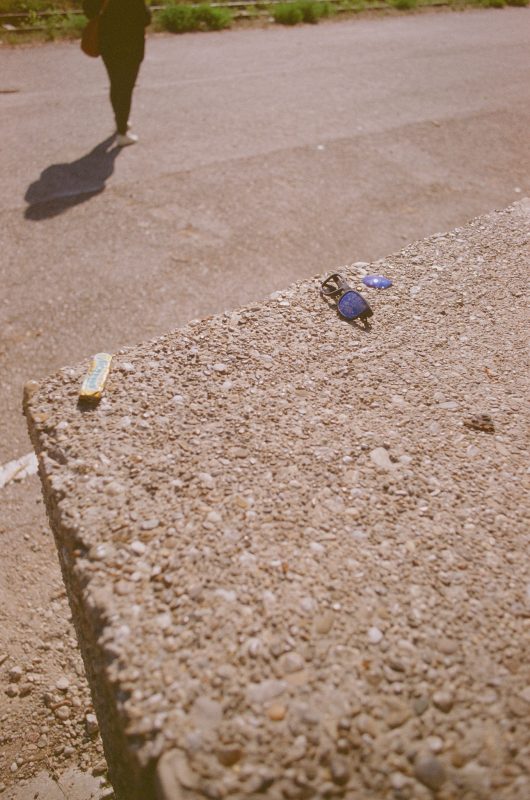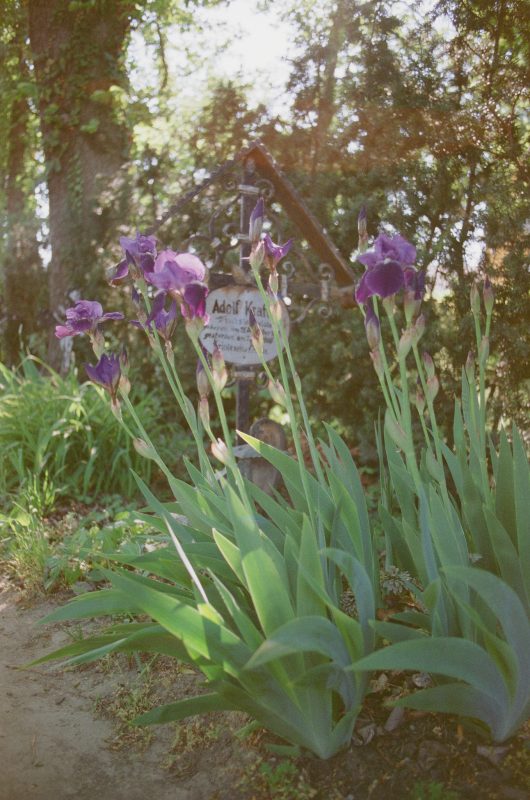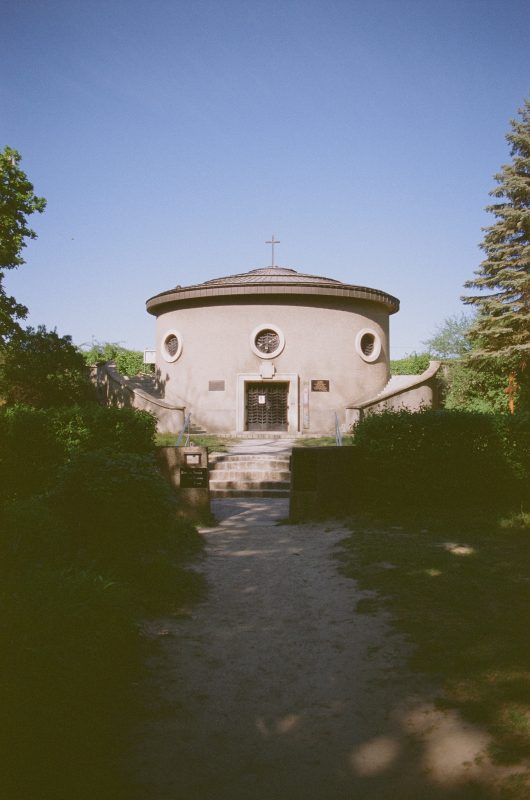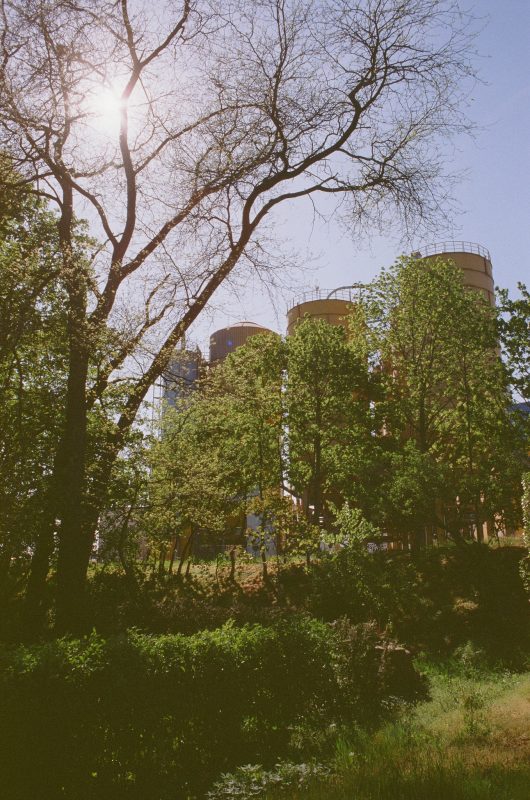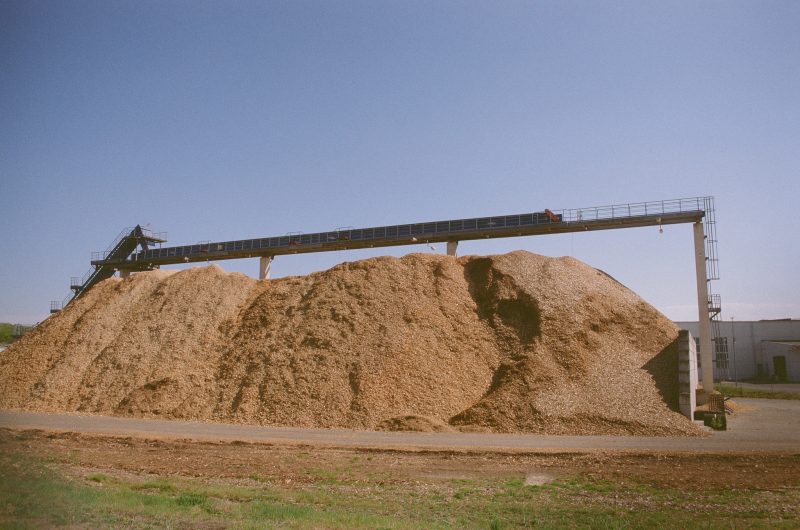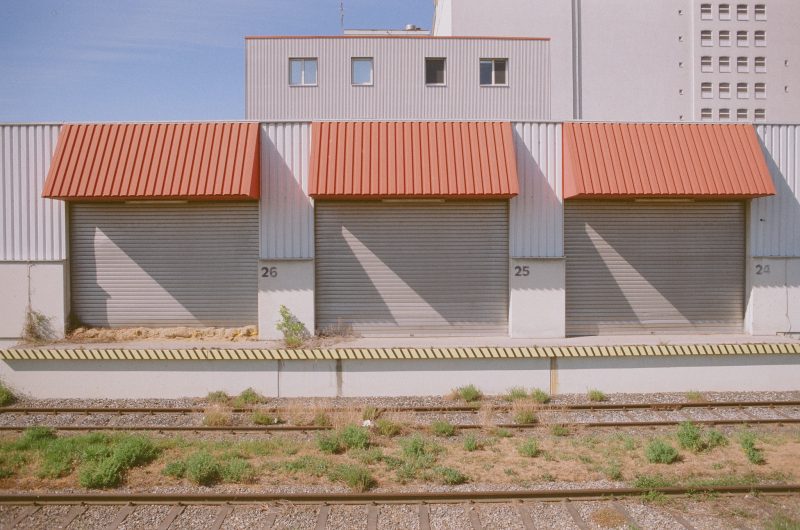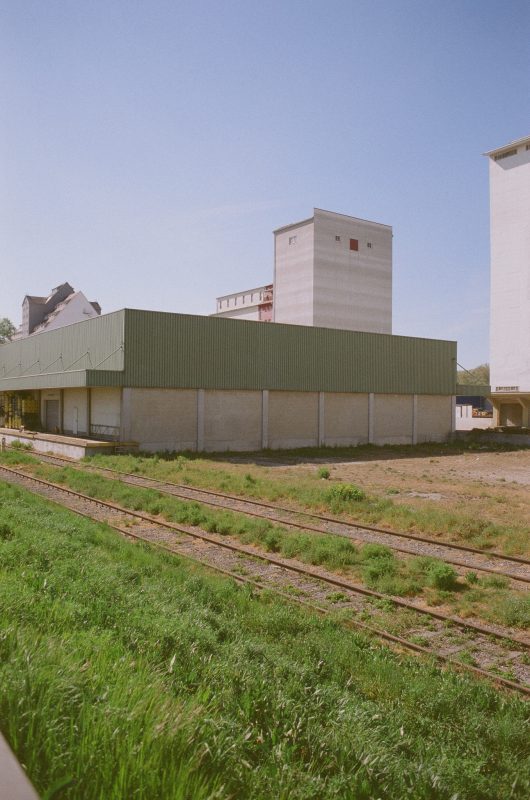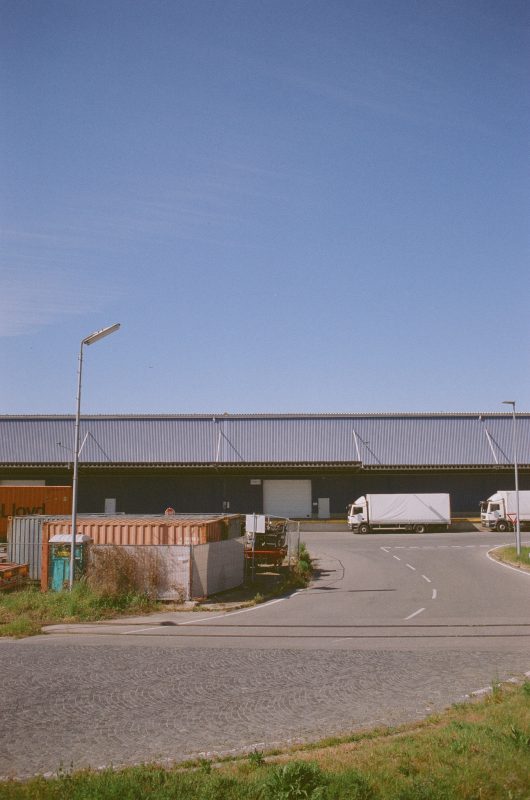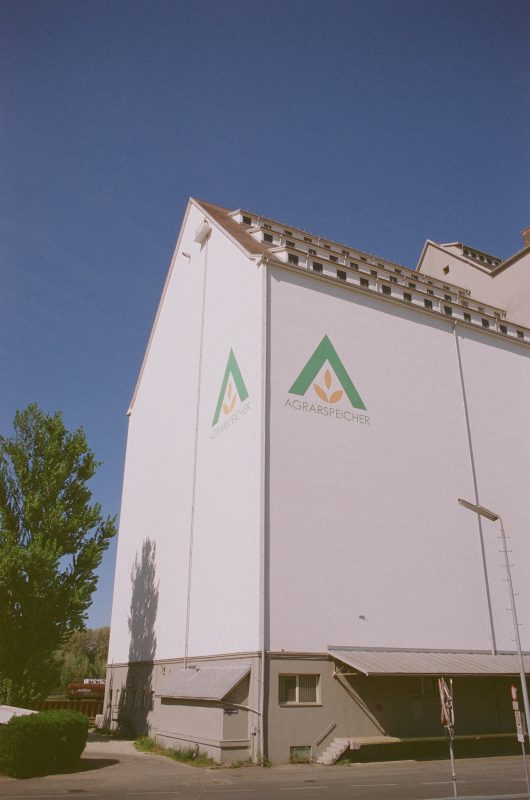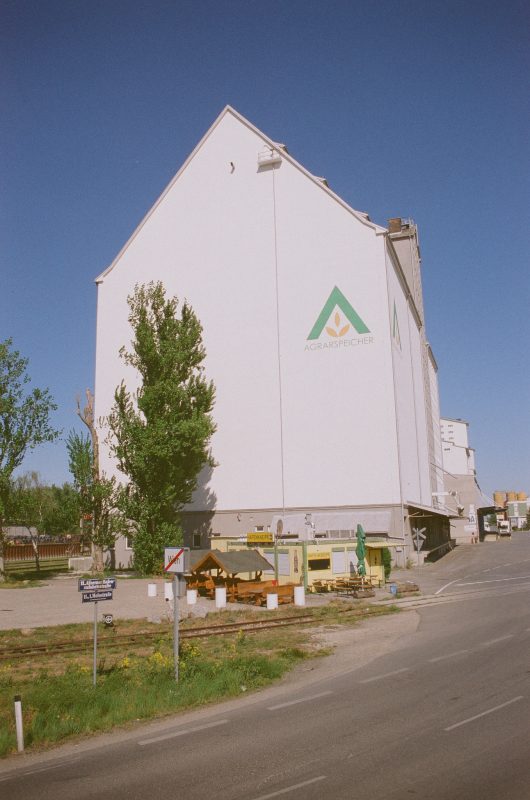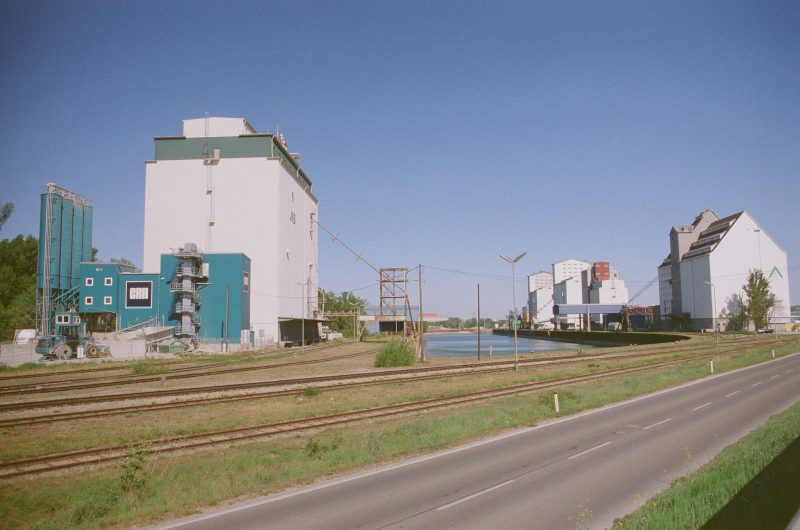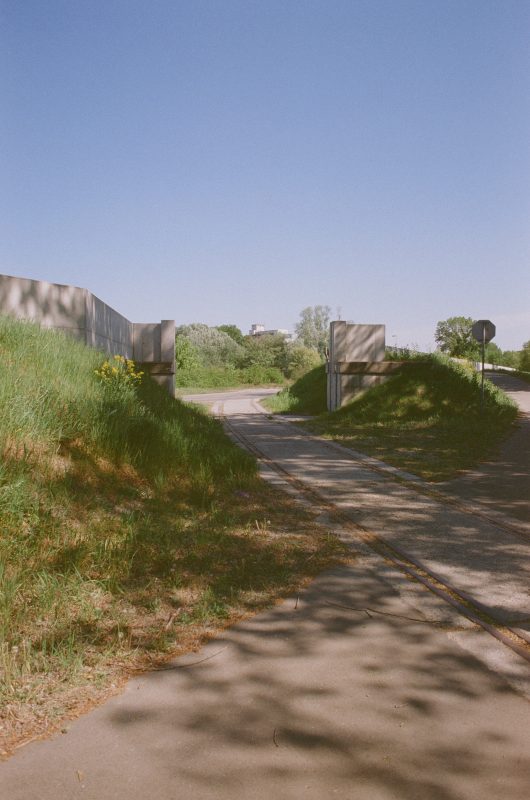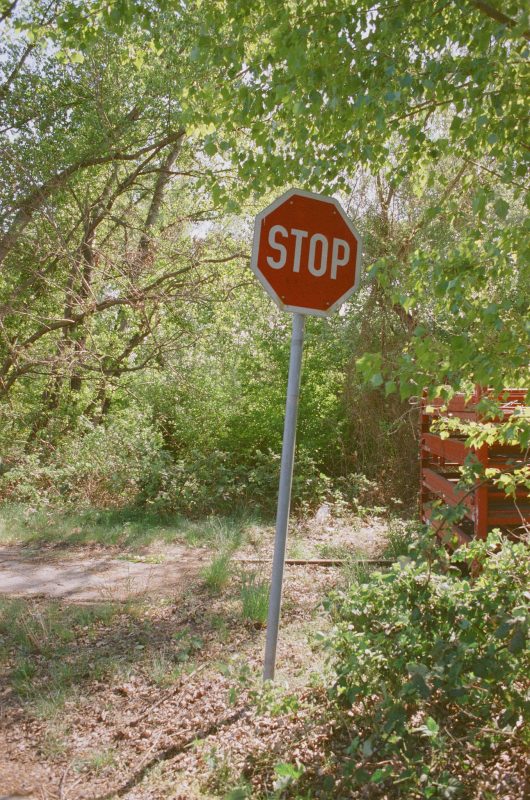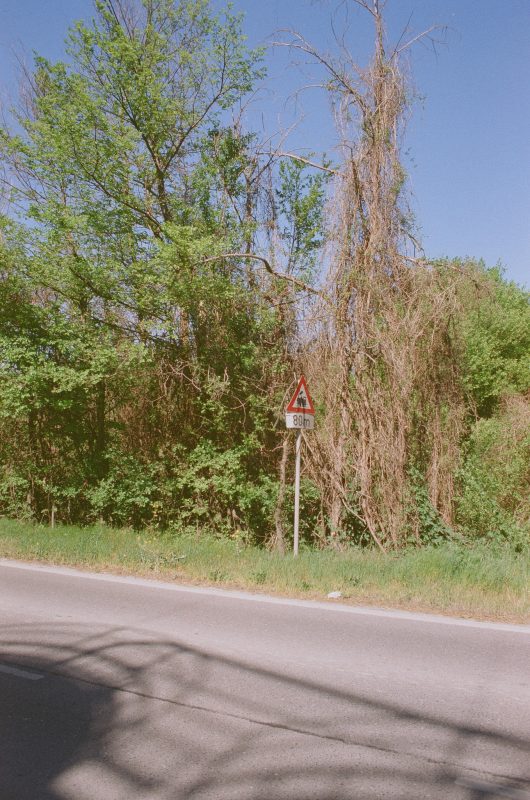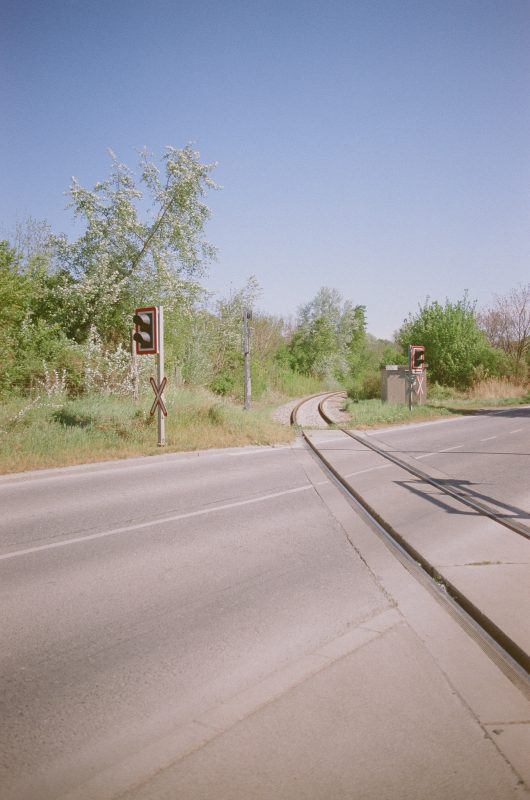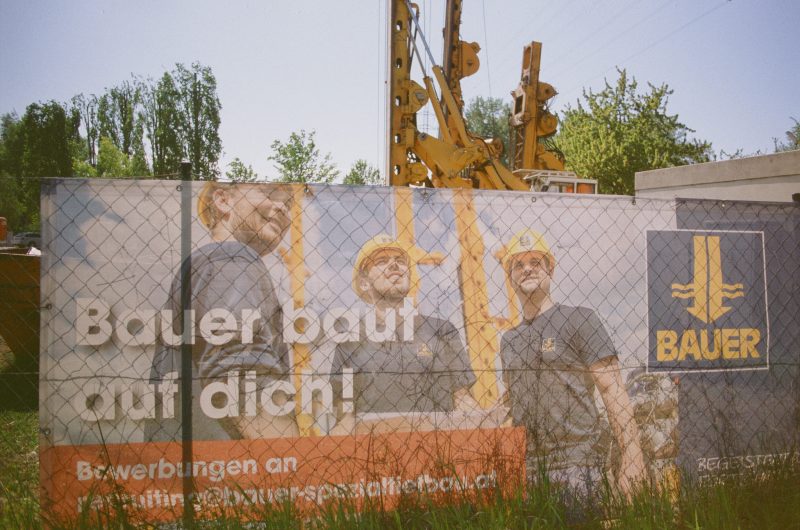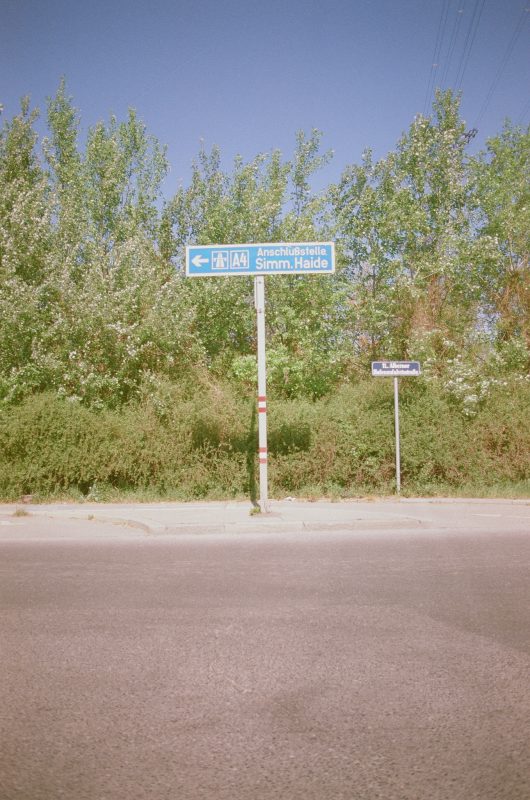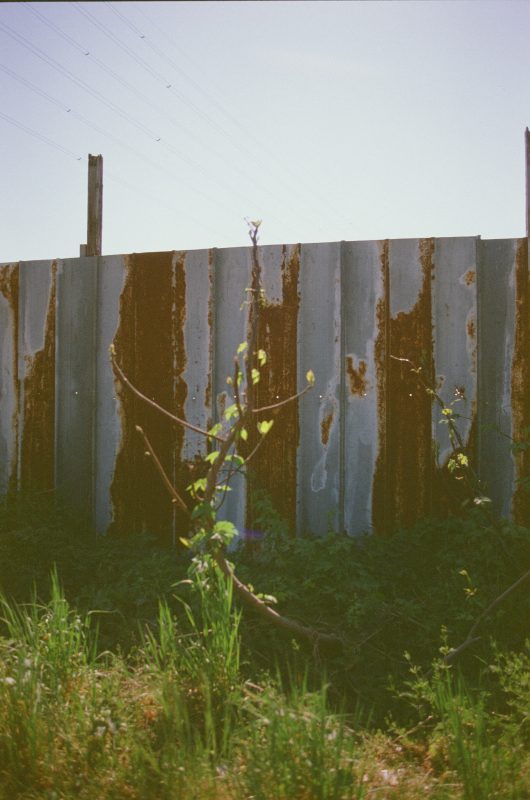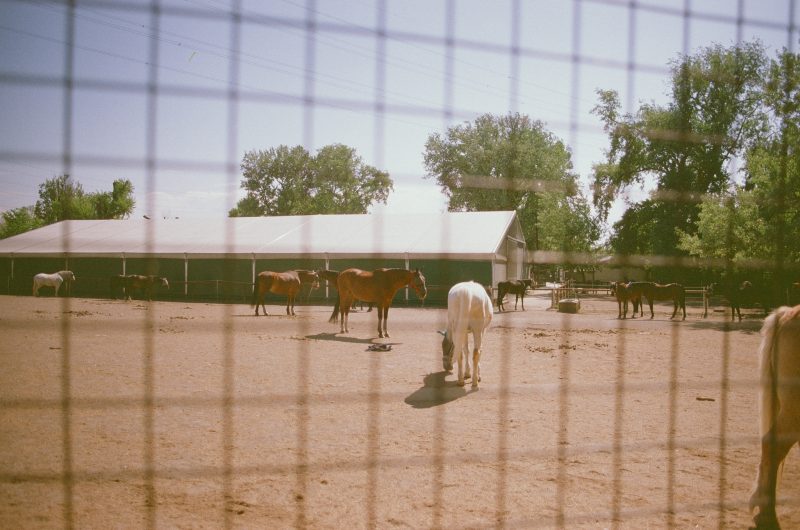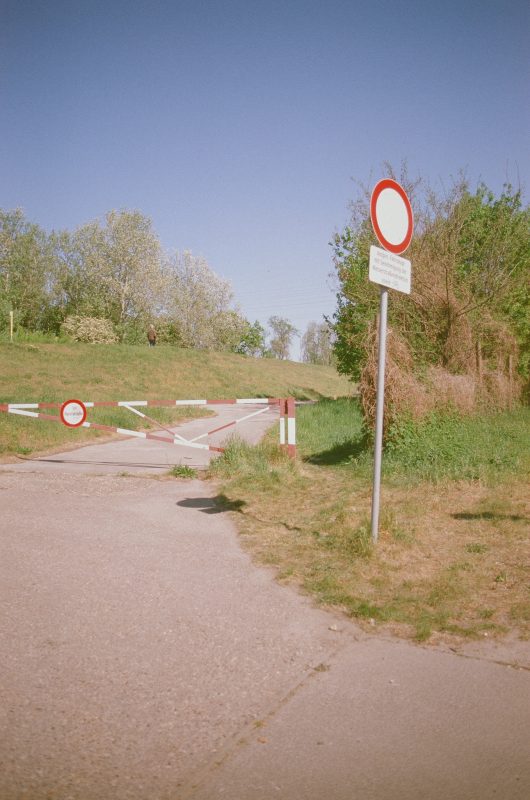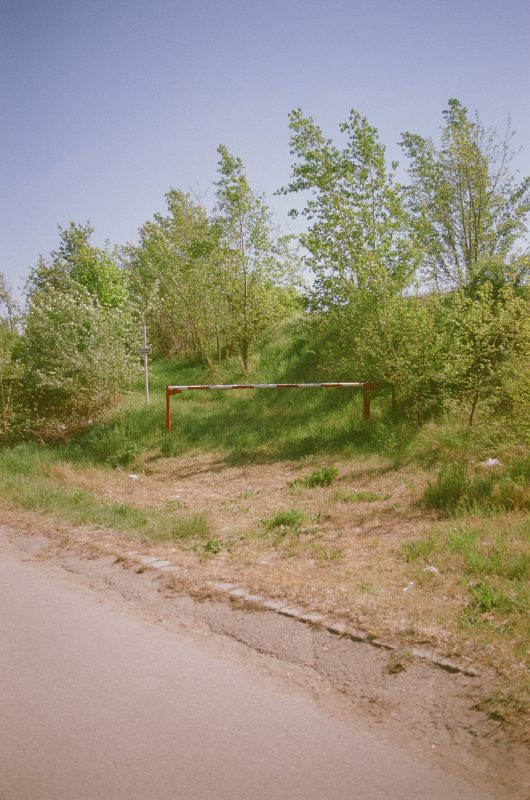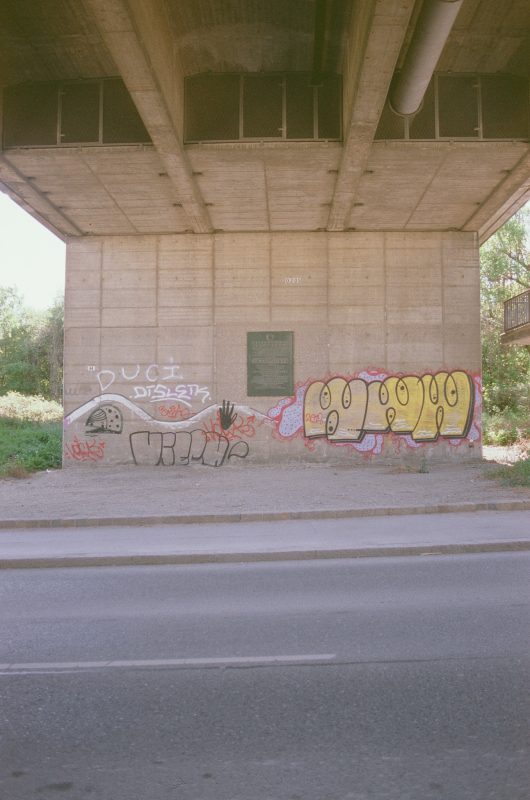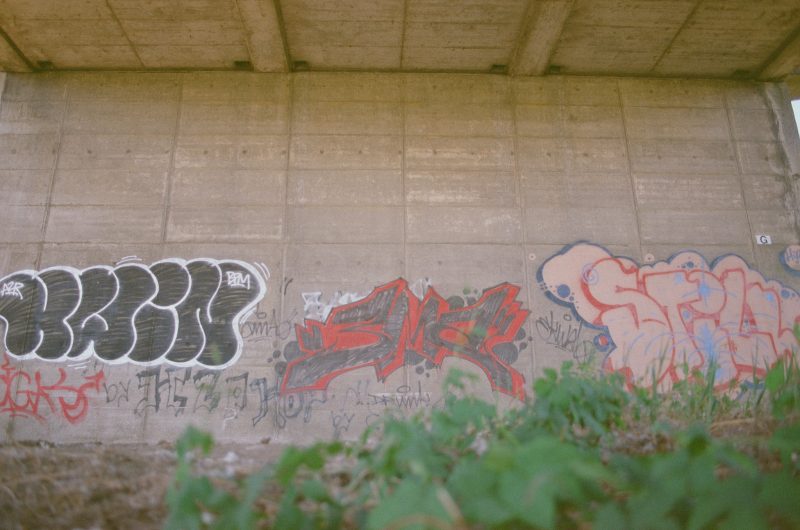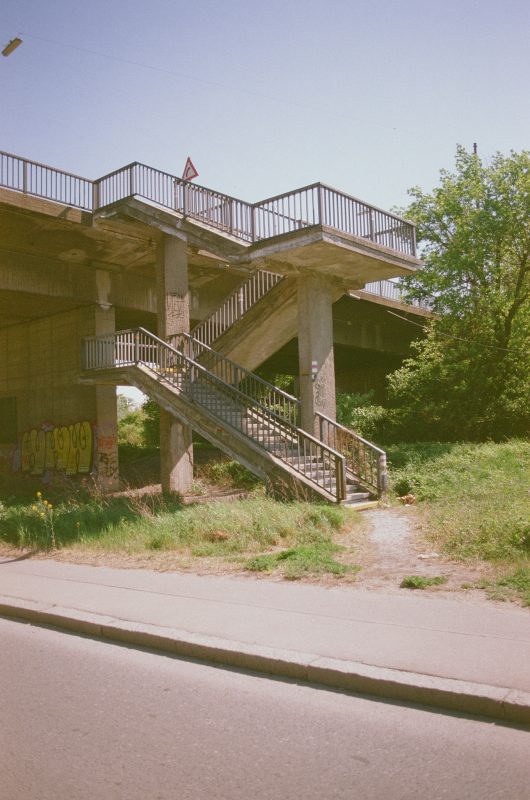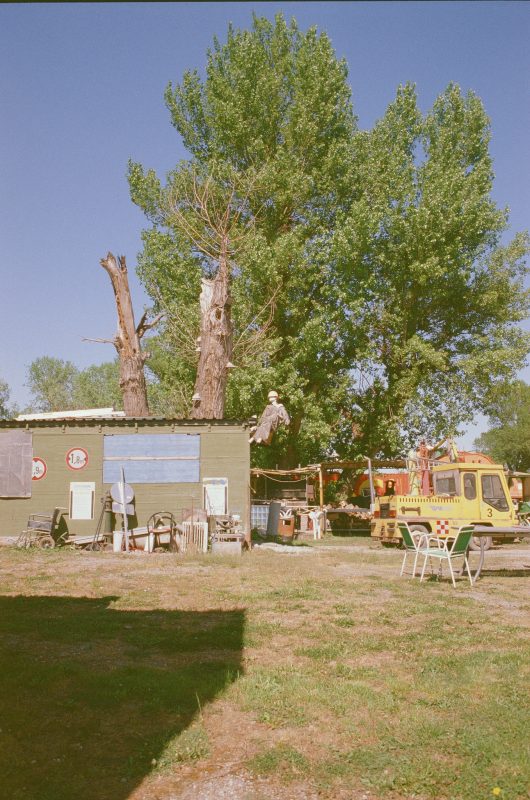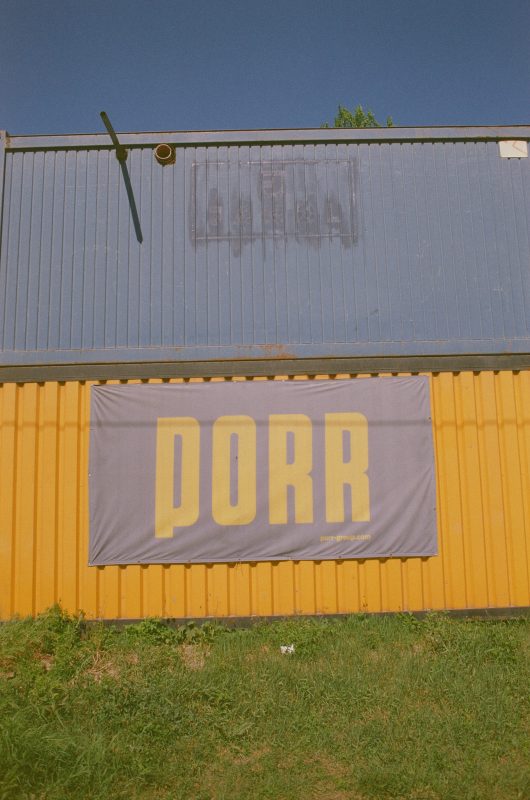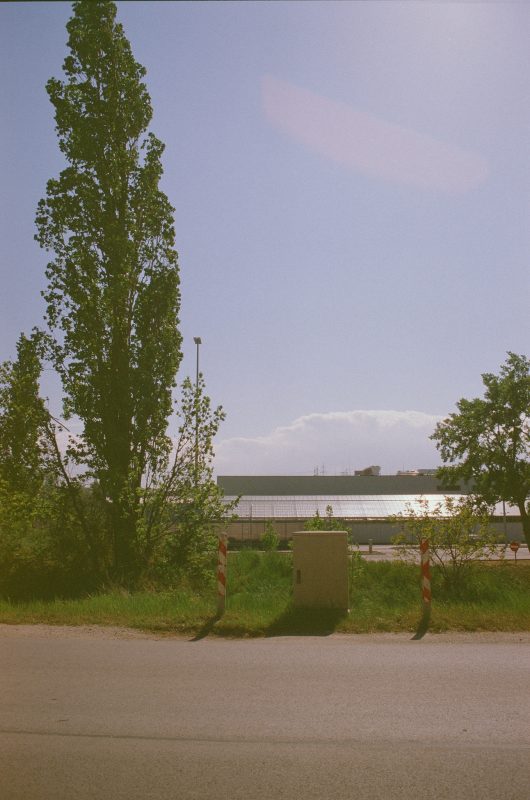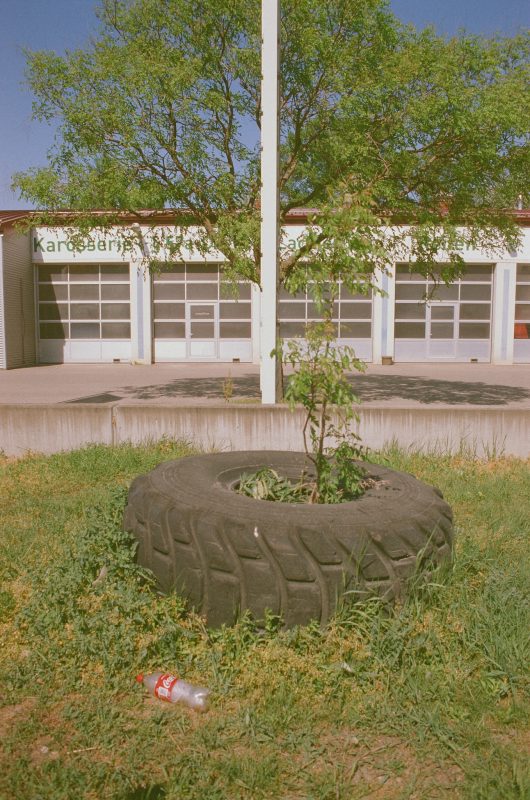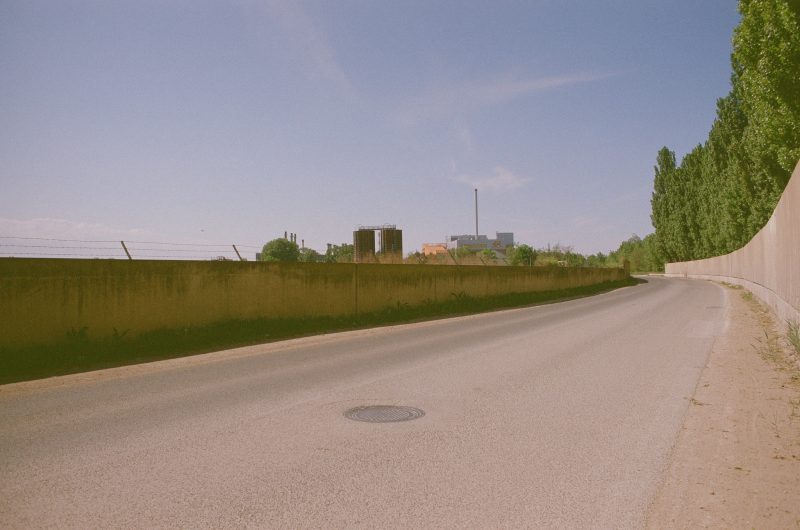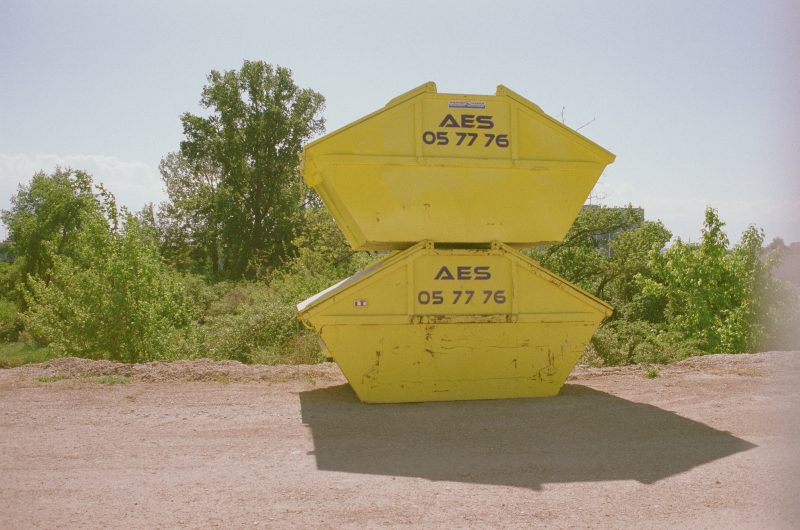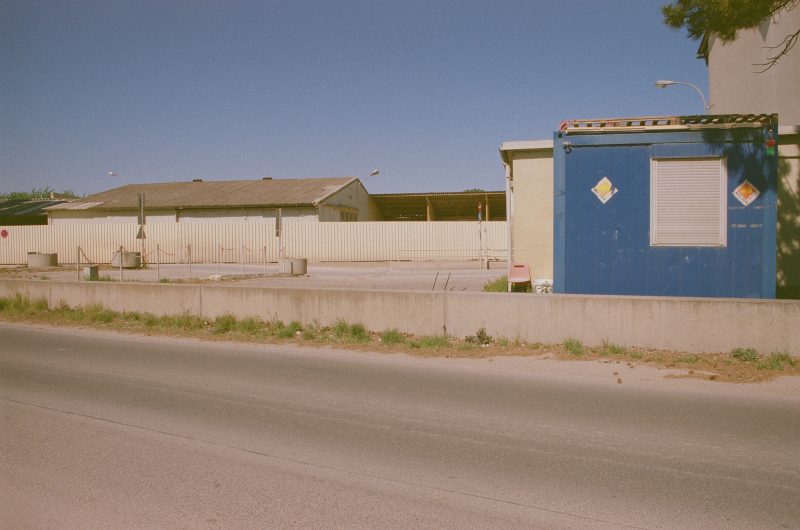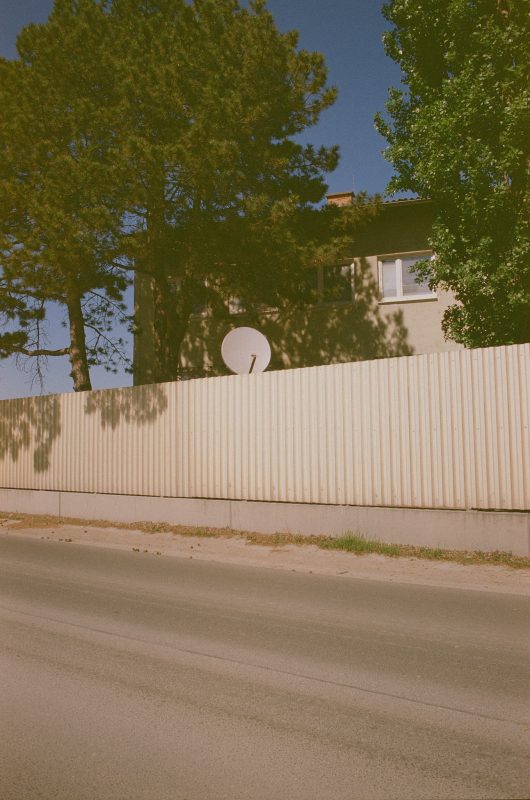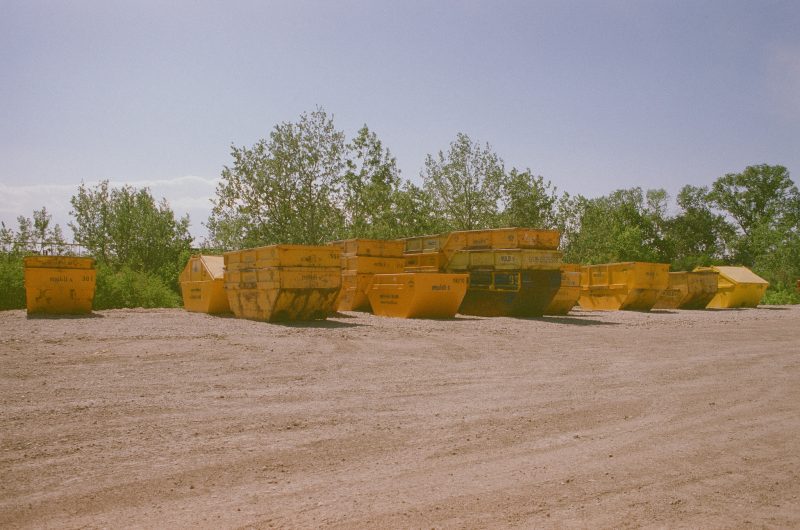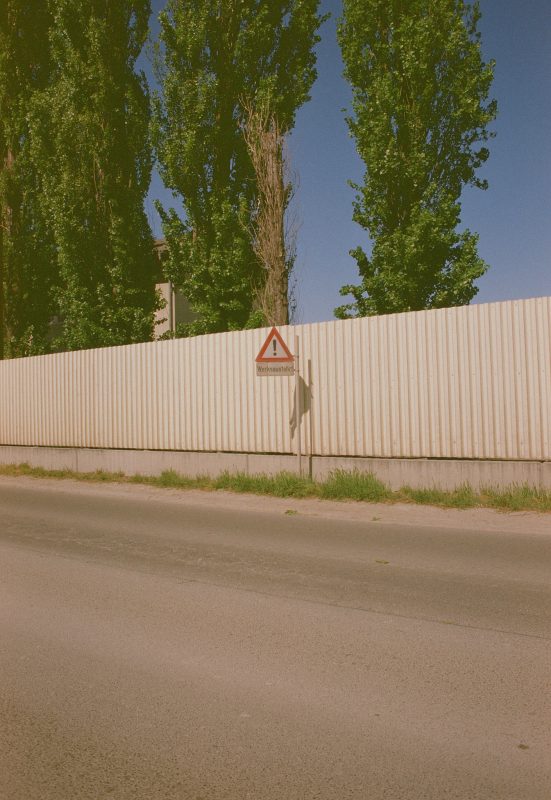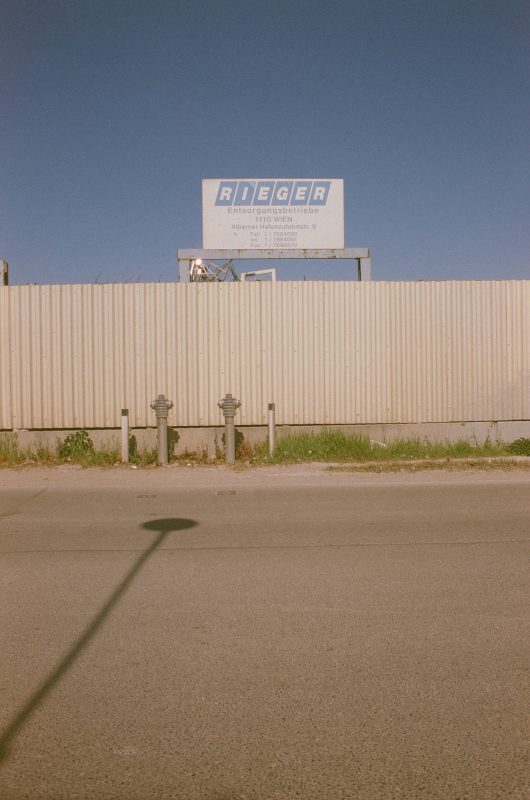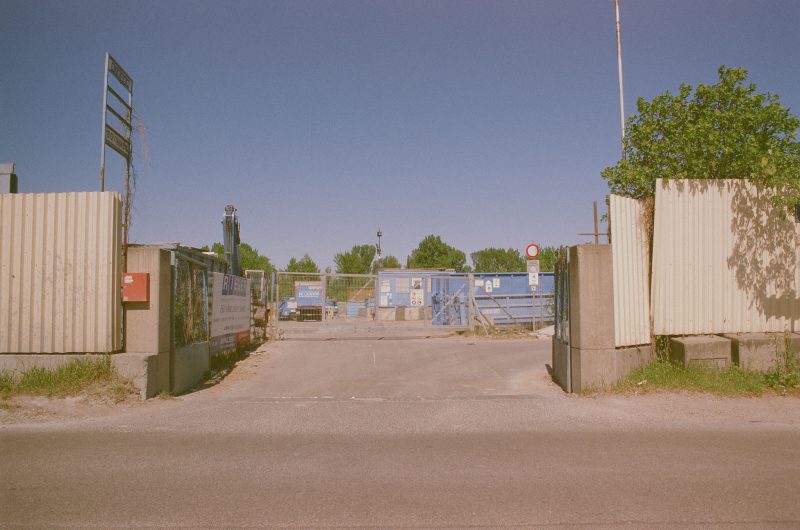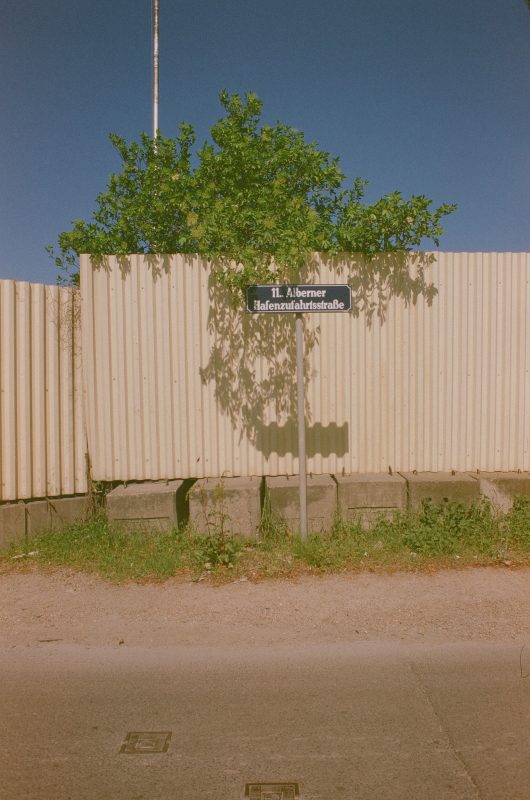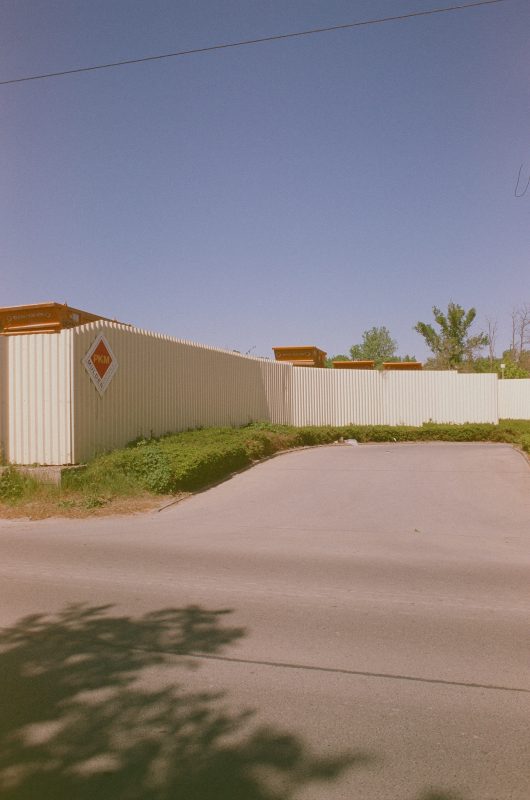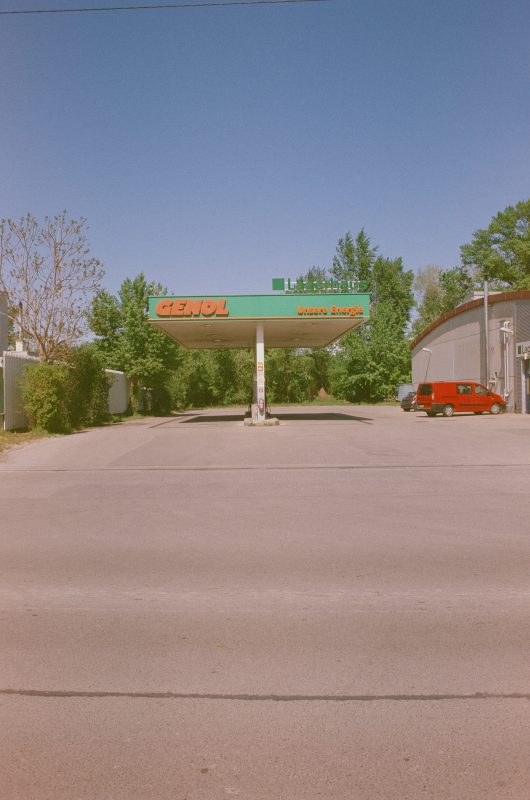Alberner-Hafenzufahrtsstraße
1110 Simmering
€ 38,00
Pages: 64 + transparent book end paper + cover
Edition: 5 + artists copy (second edition)
Date: 2020
Film: Agfa CT precisa, expired film
Camera: Minolta X300
4 in stock
Buy a print
Alberner Hafenzufahrtsstraße (Albern, Kaiserebersdorf) was named on September 12th, 1960 after its function as an entrance to the Alberner Hafen.
After the regulation of the Danube (1870-1875) numerous trading establishments, storage facilities and transshipment facilities were established on the right bank of the Danube, which is why, with some delay from around 1900, two docks with their own facilities were built (Kuchelau [waiting port for ships entering the Danube Canal] and Freudenau [protective port at Floods and ice as well as winter harbor]).
In 1938/1939 the National Socialists decided to develop Vienna into a major port; On the left bank of the Danube a harbor basin was created in the Lobau (oil port), on the right bank of the Danube near Albern a second. The harbor basin is located at the Neubach, the mouth of the river Schwechat, which was diverted in the course of the Danube regulation and was relocated to Mannswörth in 1883. Construction on the first harbor basin began on March 13, 1939, and on October 2, 1941, the first tugboat entered the completed harbor basin, which was built with five of the seven planned grain stores and earned the Albern harbor the nickname “grain harbor”.
The construction of the Albern harbor changed the flow conditions in this area of the Danube. As a result, hardly any drowned people were washed ashore here, who had previously been buried in the Cemetery of the nameless, which is also located on the Alberner Hafenzufahrtsstraße.
As a protective measure against the magnetic mines thrown into the Danube by the Royal Air Force from 1944, a demagnetization station was set up in Albern harbor, which all Danube ships had to visit at regular intervals. In the case of barges, the effect lasted for about two months, and in the case of motor ships one month.
In September 2010, the Italian street artist Blu painted one of the granaries as part of the Black River Festival with a huge mural that referred to the construction of the port and the warehouse by Nazi slave labor between 1939 and 1942, as well as the inadequate historical processing of this fact. The artwork was destroyed in October 2013.

